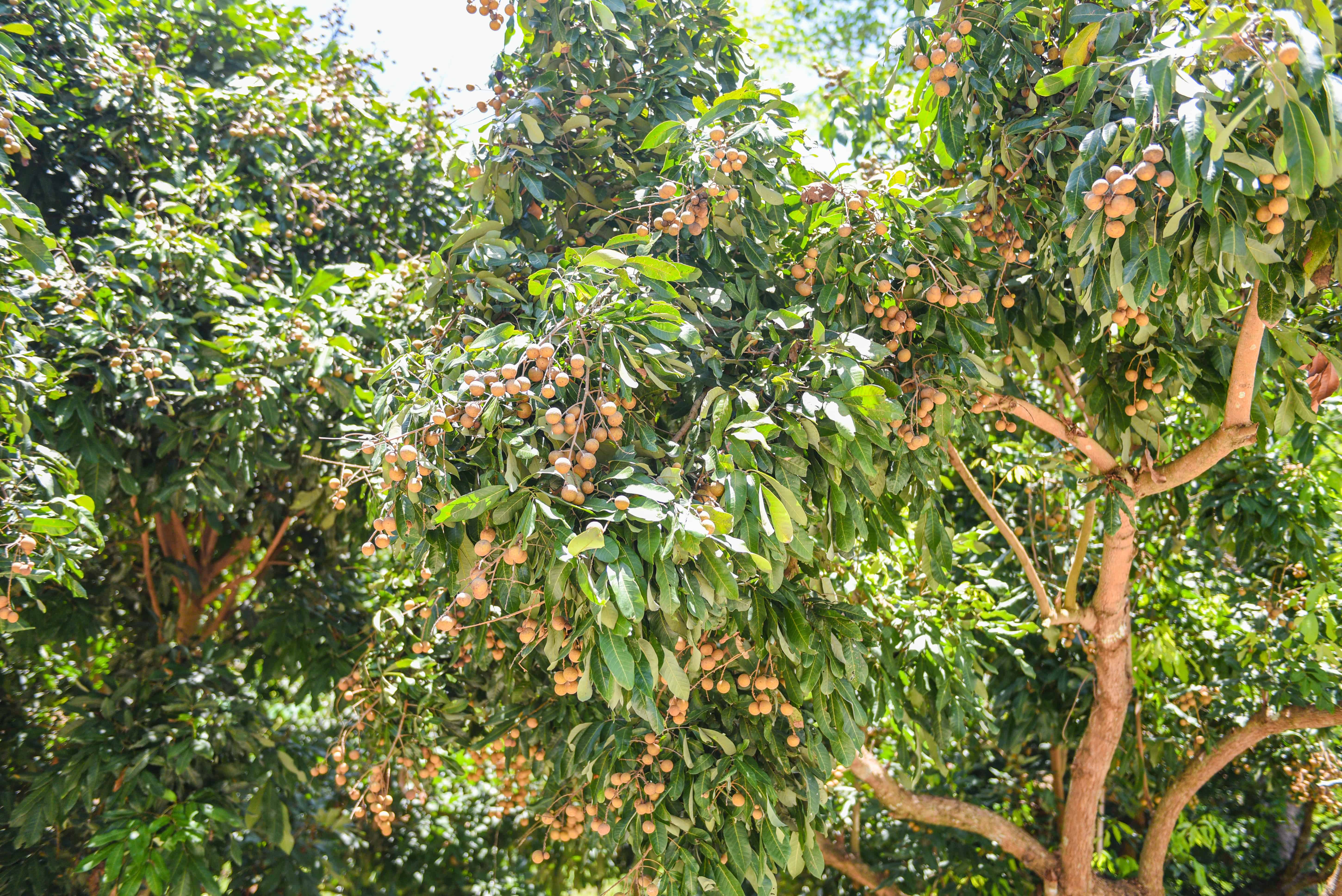Longan trees are native to Asia and are grown throughout the region for a variety of commercial uses. While not as well known as other more common woods, the longan is an evergreen and long-life tree that is related to the lychee and like its cousin, bears a sweet tasting fruit.
Let’s take a closer look at the longan tree, some interesting facts about it and what its wood is used for.
Longan tree facts and figures
The longan tree is a soapberry in the same family as both the lychee and rambutan. As such this tropical tree isn’t suitable for flooring but does have other commercial uses and also bears a sweet fruit that can be eaten.
The longan tree is native to Asia and is believed to have specifically come from a mountainous area that encompasses numerous modern-day China and Myanmar.
The heartwood of longan is red and hard. The color and grain of individual pieces of longan can vary and be quite unique in terms of shape, too.
Longan trees prefer well-drained sandy soil and access to full sun. Having said that, they also grow well in other conditions including rocky terrains and sand. The longan is somewhat sensitive to frost and prefers a warmer climate.
Longans are self-fertile trees meaning that they don’t require pollination from other trees and can grow fruit on their own.
Who grows the most longan trees globally?
While longan trees are native to Southeast Asia, they are now grown throughout Asia and on other continents in warm, temperate weather.
The largest growers of longans in the world are the following countries:
| Country | Notes regarding longan tree and fruit production |
| China | The largest grower of longan trees by far, the tree is largely grown in southern China mostly in Guangdong, Guangxi, Fujian and Hainan provinces. |
| Thailand | The second largest grower of longan trees, the longan is considered a major fruit crop in Thailand, second only to pineapples. Given the climate, Thailand can produce longan year round. |
| Vietnam | The third largest grower of longan trees, mostly in the north and Mekong River Delta provinces. |
| Taiwan | Introduced from China over 300 years ago, longan trees and fruit growing have become one of the most important fruit crops in Taiwan. |
| India | India grows longan trees in the Bengal region but continues to import much of its fruit supply from Thailand. |
| USA | Hawaii, Florida and California began growing longans in the early 1900s. It is now grown in Arizona, Texas, Nevada and Georgia too. It’s becoming an increasingly important crop particularly in Florida. |
| Australia | Longan trees are grown predominantly on the east coast of the country. |
How big does a longan tree get?
The longan tree is an evergreen that will typically grow to 30′ to 40′ (9 m – 12 m) in height and to a similar width but can grow much higher in some cases. The trunk typically grows to a little over 3′ (1 m) in diameter which is small by tree standards when compared to much larger trees used for flooring and large pieces of furniture.
Despite their medium-sized stature, longan trees are fast-growing but still need at least 6 years before they begin to bear fruit and may not produce fruit each year.
The crown of the tree tends to be round and the bark is often described as being cork-like due to its thickness and ridges.
Popular uses for longan wood
Longan wood is widely used for building posts, custom and artisan furniture and in construction but is not widely used as timber. Longan wood is also a popular choice for food smoking particularly in Asian countries.
Due to the medium size of the longan tree, the wood tends to be sold in slabs when used to build unique tables, benches and other types of furniture. It’s not big enough to be used for flooring or larger applications.
Since the longan tree is a relative of the lychee perhaps not surprisingly the two woods and trees bear similar fruits and have somewhat limited uses for the wood as a result.
Longan tree characteristics and traits summary
| Characteristic | Description |
|---|---|
| Scientific Name | Dimocarpus longan |
| Common Names | Longan, Dragon Eye Fruit, Euphoria Fruit |
| Family | Sapindaceae |
| Native Range | Southeast Asia, particularly Southern China |
| Tree Height | 30 to 40 feet (9 to 12 meters) |
| Trunk and Bark | Gray-brown, with rough texture as it ages |
| Leaves | Alternate, pinnate, glossy green, with 4-8 pairs of leaflets |
| Flowers | Small, yellow to pale green, in clusters |
| Fruit | Small, round, translucent, brownish-yellow with a sweet, fragrant, and juicy flesh |
| Fruit Taste | Sweet, with a distinct musky flavor |
| Fruit Nutritional Value | Rich in vitamin C, potassium, and various antioxidants |
| Growing Zones | USDA Zones 10-11, can tolerate some cold but thrives in tropical to subtropical climates |
| Soil Requirements | Well-drained, loamy soil with good organic content |
| Sunlight | Full sun for optimal fruiting |
| Pollination | Mostly via insects, such as bees and flies |
| Fruit Harvesting | Typically in late summer to early autumn |
| Pruning | Pruning can help maintain shape and improve fruit production |
| Pests and Diseases | Susceptible to various pests and diseases; proper care and maintenance are essential |
The Longan tree, with its sweet and juicy fruit, is a popular choice for tropical and subtropical regions. It’s essential to provide the tree with the right growing conditions and care to ensure a healthy and productive plant.


